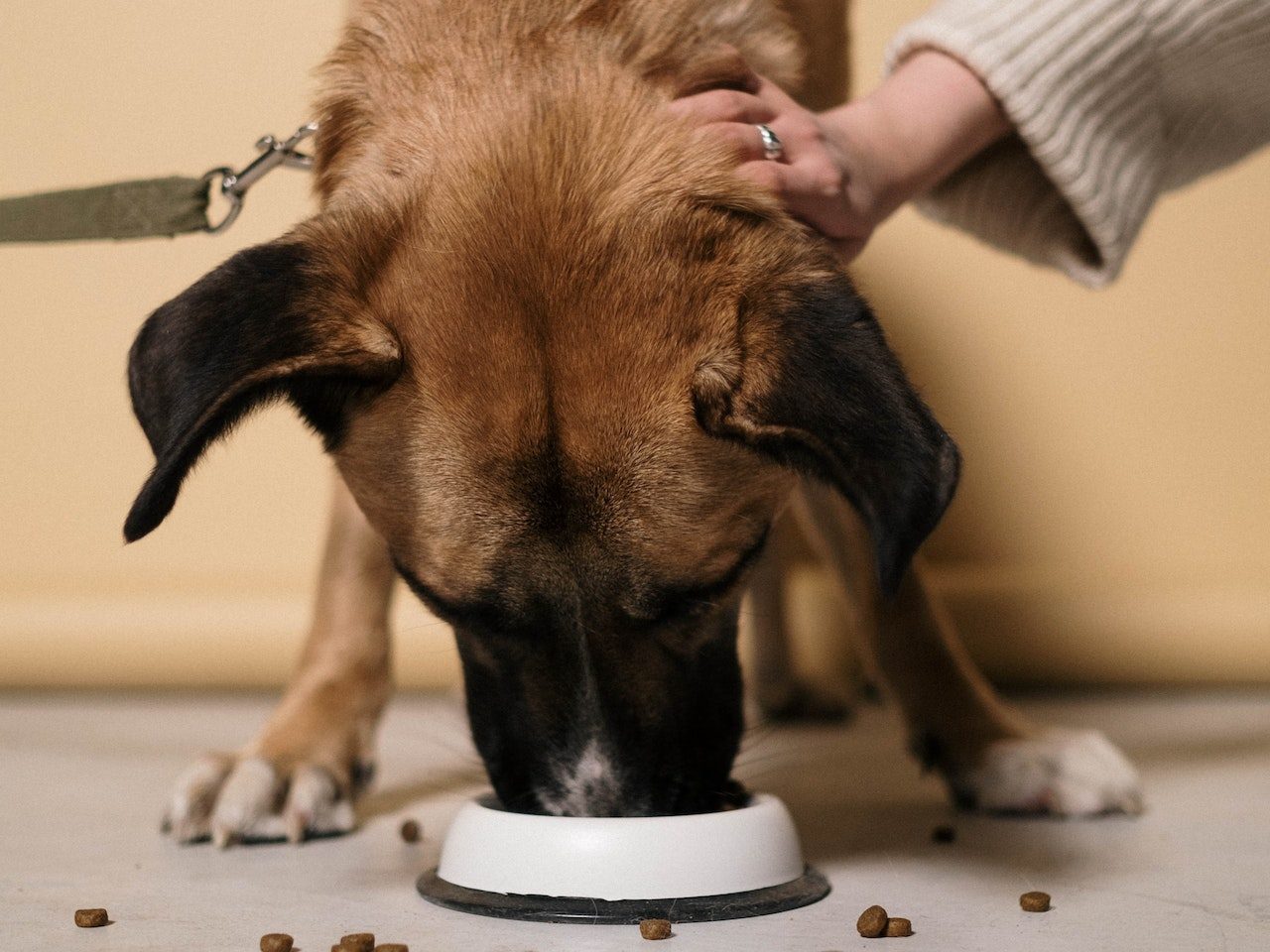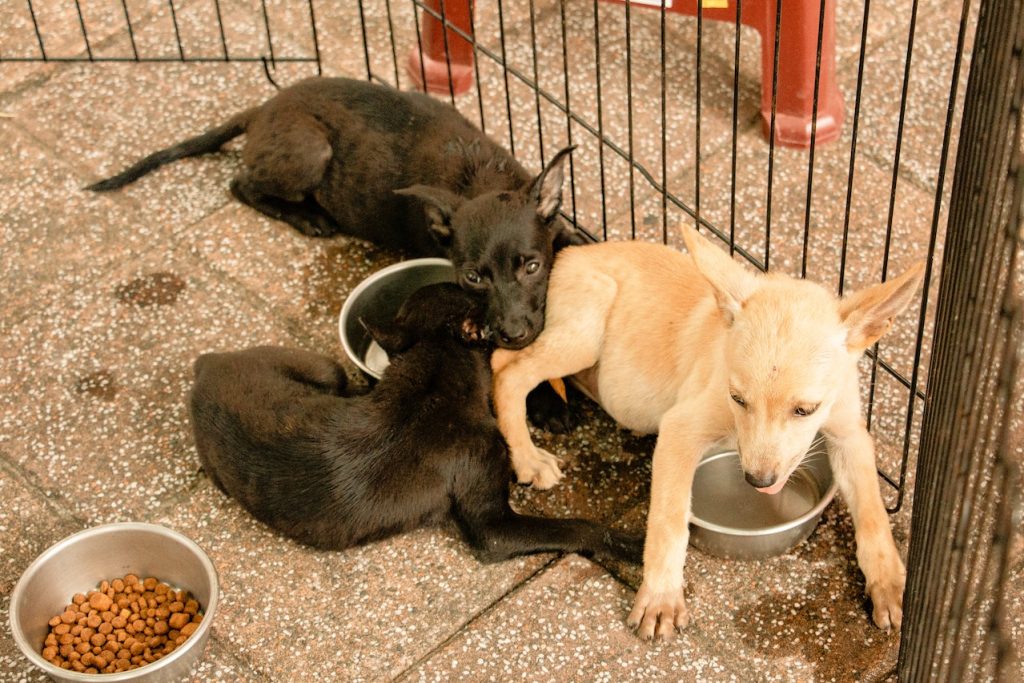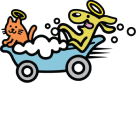When it comes to our beloved furry companions, ensuring their health and happiness is of utmost importance. One common question that dog owners often ask is, “How much should I feed my dog?” Finding the right balance between providing them with sufficient nutrition and preventing overfeeding can be a challenge. In this comprehensive guide, we’ll walk you through the factors that influence your dog’s dietary needs, how to determine the appropriate portion sizes, and address common concerns related to feeding. So, let’s dive into the world of dog nutrition and discover how to keep your canine friend healthy and content.

Properly meeting your dog’s nutritional requirements requires understanding various factors that influence their dietary needs. These include their age, size, breed, activity level, and overall health. There’s no one-size-fits-all answer, but here’s a general guideline to help you get started:
- Puppy Nutrition: Puppies have rapid growth and development, so they need more calories per pound than adult dogs. Consult your veterinarian to determine the appropriate amount for your puppy’s breed and size.
- Adult Dogs: For adult dogs, a standard rule of thumb is to feed them about 1-2% of their body weight per day. However, this can vary. More active dogs might require closer to 2%, while less active ones might need closer to 1%.
- Senior Dogs: Older dogs tend to have slower metabolisms and may be less active. Adjust their portion sizes accordingly to prevent weight gain.
Factors Influencing Feeding Amounts
Understanding the specific factors that influence how much you should feed your dog is crucial for maintaining their health:
1. Breed Size
Different breeds have varying metabolic rates and energy needs. Larger breeds may require more food, but be cautious of overfeeding to avoid obesity, which can lead to health issues.
2. Age and Life Stage
Puppies, adults, and senior dogs have distinct nutritional requirements. Puppies need more protein and calories for growth, while senior dogs may benefit from foods with joint support.
3. Activity Level
Active dogs burn more calories, so their portions should account for their energy expenditure. On the other hand, less active dogs may need fewer calories to prevent weight gain.
4. Weight Management
Maintaining a healthy weight is essential for your dog’s well-being. Adjust portion sizes if your dog gains or loses weight to ensure they stay within a healthy range.
5. Health Conditions
Certain health conditions, like diabetes or allergies, may require specialized diets. Consult your vet for guidance on the best feeding approach.

Feeding Tips for a Happy and Healthy Dog
- Portion Control: Use a measuring cup to accurately portion your dog’s food. This prevents overfeeding and helps you keep track of their calorie intake.
- Regular Feeding Schedule: Establish a consistent feeding routine to help regulate your dog’s metabolism and digestion.
- High-Quality Nutrition: Choose dog food that lists a high-quality protein source as the first ingredient and avoids excessive fillers.
- Avoid Table Scraps: Human food can be harmful to dogs, so resist the urge to share your meals.
- Monitor Weight: Regularly weigh your dog to ensure they’re maintaining a healthy weight. Adjust portion sizes as needed.
Frequently Asked Questions
Can I free-feed my dog?
Free-feeding, where food is available all day, can lead to overeating and obesity. It’s best to establish regular mealtimes.
How often should I feed my puppy?
Puppies have smaller stomachs and higher energy needs. Divide their daily portion into three to four meals until they’re around six months old, then transition to two meals a day.
Can I give my dog treats?
Treats can be a great way to reward your dog, but they should only account for about 10% of their daily caloric intake. Opt for healthy, low-calorie treats.
My dog is gaining weight. What should I do?
Consult your veterinarian to rule out any underlying health issues. If it’s due to overfeeding, gradually reduce portion sizes and increase exercise.
How do I know if my dog is at a healthy weight?
You should be able to feel their ribs without excess fat covering them. Additionally, their waist should be visible when viewed from above.
What should I do if my dog is a picky eater?
Consult your vet to rule out health issues. If your dog is healthy, try switching to a different high-quality dog food or adding small amounts of lean meat to entice them.

Finding the perfect balance of how much to feed your dog is essential for their well-being. By considering factors such as their age, breed, activity level, and overall health, you can tailor their diet to meet their specific needs. Remember that portion control, regular feeding schedules, and high-quality nutrition are key to keeping your furry friend happy and healthy. Always consult your veterinarian for personalized advice, and enjoy the journey of providing your loyal companion with the best possible care.
Read more blog posts!



